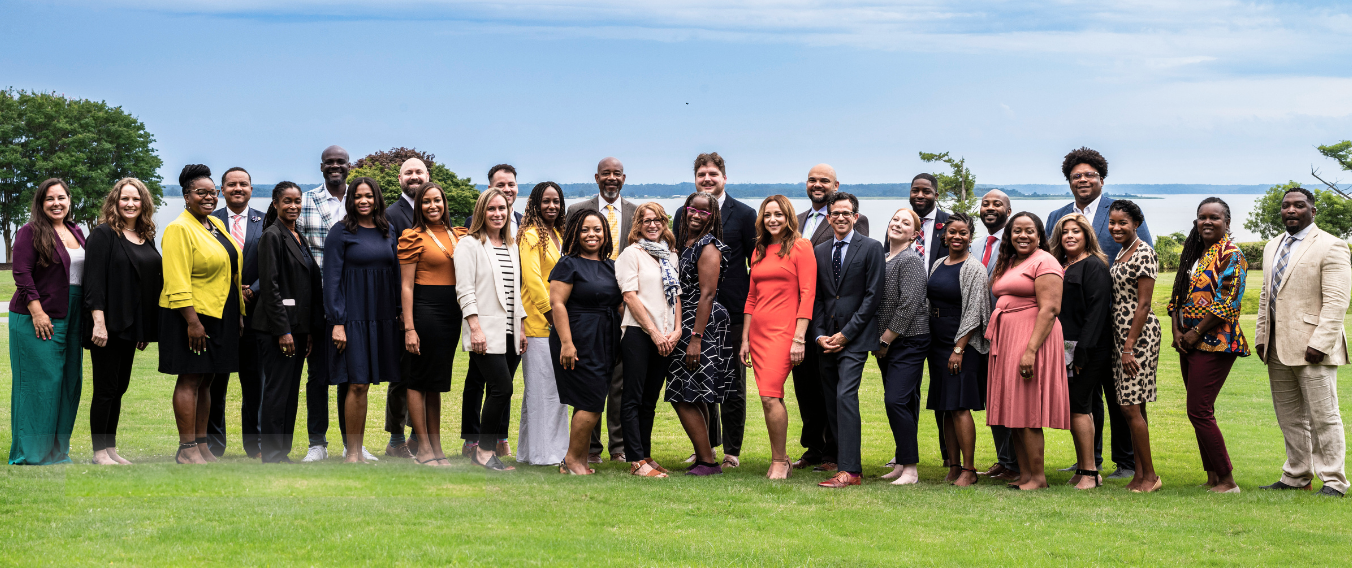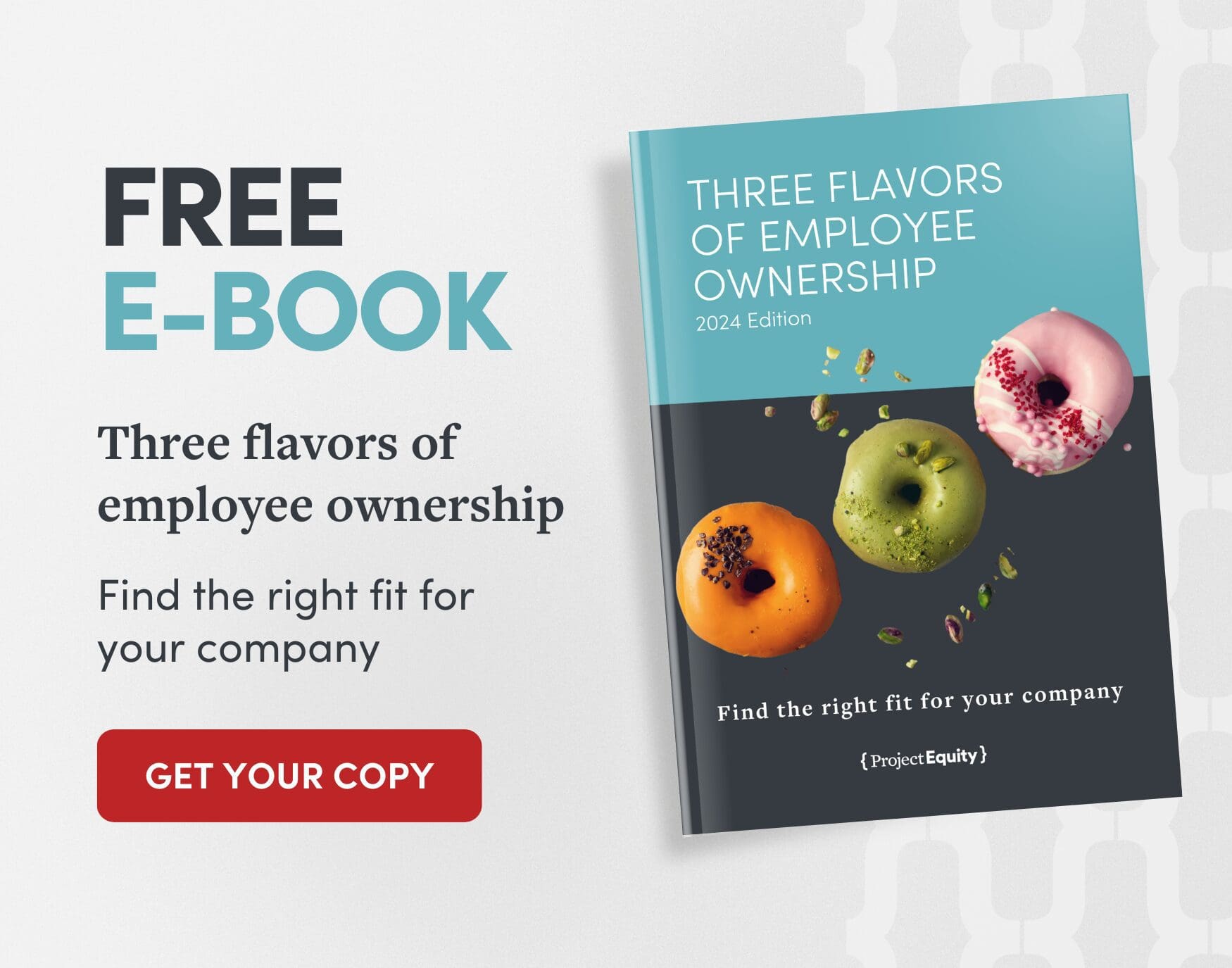Becoming an ESOP with a mission in equity: Q&A with CT3 Education
- Oakland, California
Nataki Gregory: CEO, 8 years
Rob Kawada: Marketing Director, 9 months
Greg Pace: Financial Advisor and ESOP Committee Member
We had the opportunity to sit with CT3 Education, an equity-focused education consulting practice based out of San Francisco, CA, with employee-owners across the United States. We talked about their decision to transition to employee ownership using the Employee Stock Ownership Plan (ESOP) model.
Project Equity: Tell us about CT3, and what makes you proud of being a part of the company?
(Nataki) I think what makes us stand out is our focus on developing capacity. We make it our mission to focus on equity, and developing effective teacher coaches for everyone in the classroom.
(Rob) Watching the teachers leave our sessions with more of a purpose going forward is incredibly powerful.
Project Equity: You mentioned equity being at the heart of what you do. How and where does equity come into your work?
(Nataki) When we walk into a classroom, the first thing we help teachers and leaders do is attune their eyes to who is in the room. We do a baseline observation of how many students there are: boys vs girls, race, who is engaged and who isn’t. By the end of the day we collect enough data to be able to say things like, “Oh wow, none of the boys are paying attention, none of the Black kids are engaged, or the children with disabilities aren’t being paid attention to.” We pull those threads out, and then ask the teacher about what we’ve found. Then we’ll develop a coaching plan for those teachers on how to work with each of those scenarios to allow them to lead a more equitable classroom across the board. Everyone gets the tools, aid and education opportunities.
Project Equity: Why was employee ownership—the ESOP (Employee Stock Ownership) form in particular—chosen?
(Greg) Different avenues had been explored for the owner to retire. The benefits of employee ownership, and an ESOP in particular, were best suited for what the founders wanted to accomplish over the long term. The main drivers were that they wanted to sell to the employees because it increases employee retention, and provides greater wealth to the individuals who do the work.
Project Equity: How did the Employee Ownership Catalyst Fund play a role in the transition?
(Greg) We did a leveraged ESOP [Employee Stock Ownership Plan], meaning that the business took out a loan to finance the transaction, so it was critical for us to find financing. The Employee Ownership Catalyst Fund made the ESOP transaction feasible.
Project Equity: What was the most challenging, or surprising, part of the transition process?
(Greg) It’s a great learning experience given the amount of information you have to absorb. It took us over a year to go from vision to establishing the ESOP, and we’re not done yet. It’s not a quick overnight thing, and it’s an ongoing learning process.
Project Equity: When do you think your team will feel the impact of being employee-owners?
(Nataki) The way an ESOP works is that the first stock allocation [to the employees’ retirement accounts] is at the end of this year [2023]. Now more people are thinking and talking about things like finding cost savings while still getting quality—thinking like owners.
"I truly believe in the employee ownership concept and the benefits it can provide. It can create long-term wealth; creating generational wealth for those who traditionally might not gain that opportunity is exciting. "
Greg Pace
Financial Advisor and ESOP Committee Member
CT3 Education
Project Equity: What excites you, or the other employees, the most about becoming employee-owned?
(Nataki) I mean, the end of the rainbow is ownership of a company. That’s exciting. You have to remind yourself of that, as you go through these million steps.
(Greg) You hear about other companies where the employees don’t have a 401(k) or retirement plan, or the opportunity to have a sense of ownership and create some wealth. For us, having the opportunity to pass down wealth if we want to, multiple generations even…that’s what gets me excited.
(Rob) I came in very late to the process, but one thing that’s exciting and beneficial to the company is the retention and attraction of new talent.
Project Equity: What was it like working with Project Equity throughout the process?
(Rob) Project Equity was there every step of the way.
(Nataki) Completely agree. When Stacey first came in to give a presentation about employee ownership, and the options, it was the first time that it felt real. She has been a critical part of the process.
Project Equity: What advice would you give business owners thinking of selling to their employees?
(Nataki) The biggest thing is to set a realistic timeline for when to talk to employees about it, and to set clear expectations. Be clear on what being an “owner” actually means, because it doesn’t necessarily change the day-to-day, and that can be confusing.
(Greg) Agreed. We were fortunate to choose the right partners in the process the first time through, but business owners need to be selective about who the right partners are—financiers, trustees, advisors, etc.
(Rob) Have an open and consistent communication with everyone on what’s happening, and touch base at least once a month.
Ownership story details
Transitioned
2022
Employees
48
Industry
Type of EO
Topic
GeneralBlack employee ownershipEmployee Ownership Catalyst Fund


